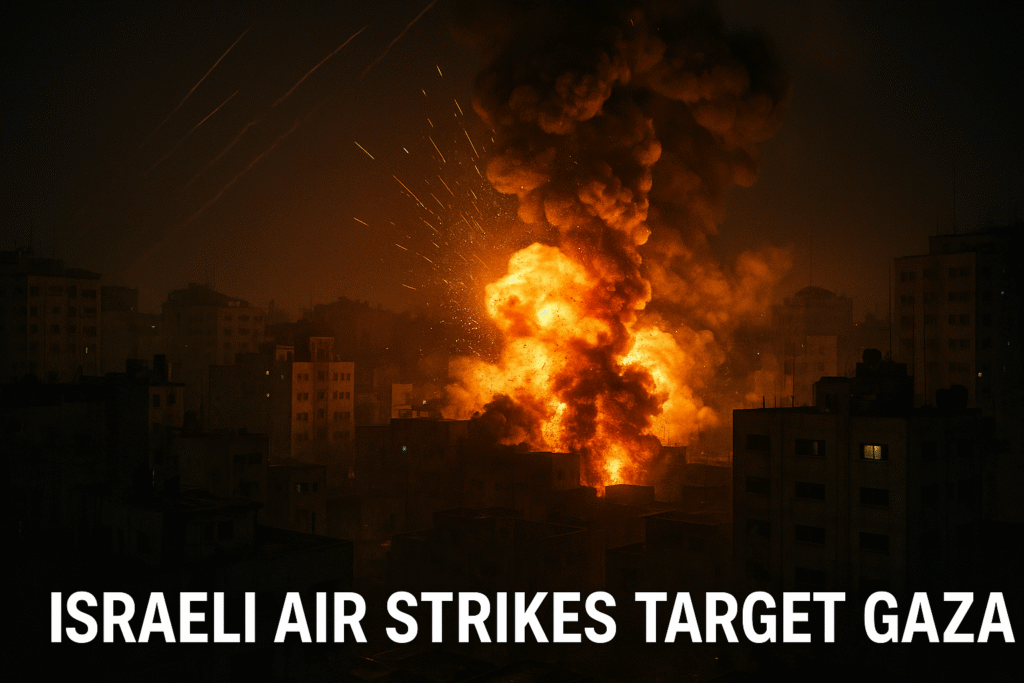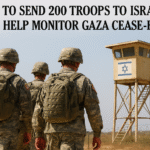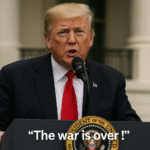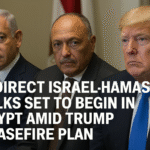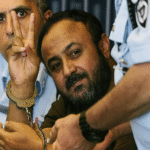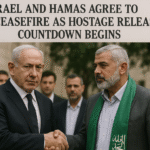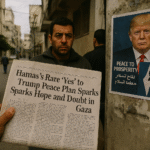By Harshit, Jerusalem | October 19, 2025
Israel has launched a series of air strikes in southern Gaza, claiming that Hamas carried out attacks in what Israeli officials described as a “bold violation of the ceasefire.” The escalation comes as the first phase of a US-brokered ceasefire between Israel and Hamas remains in place, following weeks of violence that have left thousands dead and destabilized the region.
Alleged Ceasefire Violations
A military spokesman for Israel said Hamas forces conducted “multiple attacks against Israeli forces beyond the yellow line,” referring to the area Israeli troops agreed to withdraw from under phase one of the ceasefire deal. In response, Israel’s air force targeted positions in Rafah and other southern areas of Gaza.
Hamas, meanwhile, asserted that it remained committed to the ceasefire and accused Israel of repeatedly violating the agreement. Tensions have been further fueled by reports that rival armed groups are attempting to exploit the partial Israeli withdrawal, creating a power vacuum in parts of the territory.
Background of the Ceasefire
The US-brokered ceasefire, part of President Donald Trump’s plan to end the two-year-old Gaza conflict, came into effect on 10 October. The agreement’s first phase facilitated the release of all living hostages and the return of deceased individuals to Israel. In addition, Israel freed 250 Palestinian prisoners from its jails, alongside 1,718 detainees from Gaza.
The ceasefire followed a major escalation in October 2023, when Hamas gunmen launched attacks that killed approximately 1,200 people in southern Israel and took 251 hostages. In retaliation, Israel initiated a prolonged military campaign in Gaza. According to the Hamas-run health ministry, at least 68,000 people have died as a result of Israeli attacks, figures considered reliable by the United Nations.
US Concerns Over Imminent Attacks
Hours before the Israeli strikes, the United States issued a warning citing “credible reports” that Hamas was planning an imminent attack on civilians in Gaza. The State Department described such an attack as a “direct and grave” violation of the ceasefire and said it would undermine ongoing mediation efforts.
Hamas has strongly denied any imminent attacks and accused Israel of supporting rival armed groups in Gaza. The State Department stated that Egypt, Qatar, and Turkey—the other guarantors of the ceasefire—have been informed of the situation and urged Hamas to comply with the agreement. “Should Hamas proceed with this attack, measures will be taken to protect the people of Gaza and preserve the integrity of the ceasefire,” the US said.
Trump’s Stance on Civilian Casualties
President Trump has repeatedly warned Hamas against harming civilians, emphasizing that such actions would provoke a strong response. “If Hamas continues to kill people in Gaza, which was not the Deal, we will have no choice but to go in and kill them,” Trump said on Truth Social, later clarifying that US troops would not be deployed in Gaza.
Internal Clashes and Security Challenges in Gaza
Violence within Gaza has also escalated. Last week, clashes erupted between Hamas security forces and armed members of the Dughmush family in Gaza City, resulting in 27 deaths in one of the most significant internal confrontations since the end of major Israeli operations.
Meanwhile, Israeli Defense Forces (IDF) still control just over half of the Gaza Strip, following their withdrawal to the agreed ‘Yellow Line’ under the Trump plan. Reports indicate that gangs have looted aid convoys and are operating with relative impunity in parts of Gaza, creating additional security concerns.
Hamas’ Response and Security Measures
Hamas, which has governed Gaza for 18 years, has recalled around 7,000 members of its security forces to reassert control over the territory. Under the Trump 20-point ceasefire, Hamas was required to relinquish its weapons and ensure that Gaza no longer posed a threat to Israel—a condition it has not fully met.
In response to US warnings, Hamas stated that its police forces, “with broad popular and community support, are fulfilling their national duty in pursuing these gangs and holding them accountable.” The ceasefire also obligates regional partners to guarantee that “Hamas, and the factions, comply with their obligations and that New Gaza poses no threat to its neighbours or its people.”
Looking Ahead
Any evidence of armed action by Hamas or other factions will be considered a violation of the ceasefire and could prompt renewed Israeli strikes or diplomatic interventions. As both sides navigate a fragile peace, the international community continues to monitor Gaza closely, urging restraint and adherence to agreements designed to protect civilians and stabilize the region.

